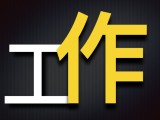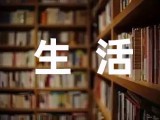unit 9 when was it invented?学习目标: 1.学会使用含有被动语态的不同句型结构“when/ where was it invented?” 和“what are they used for?--- they are used for doing sth..”来谈论各种发明物的历史。 2.学习理解被动语态的含义。能够就不同的发明物与他人交流看法,发表自己的见解,并陈述理由。 3.了解到更多在世界上有重大意义的发明,并向那些伟大的发明家学习。 一、日常用语 1. --- when was the car invented? ---it was invented in 1985. 2. ---when were electric slippers invented? ---they were invented last year. 3. ---who were they invented by? ---they were invented by julie thompson. 4. ---what are they used for? ---they’re used for seeing in the dark. 二.重点短语 1.. be used for 被用来做… eg. what is the book used for? 书是用来做什么的? the book is used for reading. 书是用来读的 the plane is used for traveling. 飞机是用来旅行的2.be used to doing sth 习惯于做某事. 3. according to 根据,按照 4. in this way 这样 5. give sb. some time to do sths 给某人一些时间做某事. eg. the teacher gives the student two hours to do homework. 老师给同学们两个小时做作业。 6. help sb. do sth. 帮助某人做某事 i’ll help you leave the island. 我将帮助你离开岛屿。 7. by accident 偶然的 by mistake 错误的 8. fall into 落入,陷入 9. in the end= at last=finally 最后 10. make sb. adj. 使某人… make me happy 使我开心 11. sb. called\named … 被叫作,被称作 a chef called black. 一个叫布莱克的厨师 a doctor named amy 一个叫艾米的医生 12. sprinkle a lot of salt on chips 在薯片上洒大量的盐 13. decide to do sth. 决定做某事 i decide to taste the hot tea 我决定品尝热茶。 14. not…until 直到…才 you can’t leave until i arrive. 直到我到了你才能走。 i can’t watch tv until i finish my home work. 直到我完成作业,我才能看电视。 15. be discovered in 年代 be discovered in 地方 eg. the tea was discovered in china in 1610. 茶是在16XX年在中国被发现的。 16. over three thousand years 三千年以上 17. produce a pleasant smell 产生一股令人愉快的气味 18. over an open fire. 在明火上 19. in sixth century 在第六世纪 in nineteenth century. 在十九世纪三.知识点讲解1.i think the telephone was invented before the car.我认为电话在汽车之前发明的.(1) i think 后接的一个分句做i think 的宾语,这个分句称叫做宾语从句. (2)was invented 是被动语态.(3)invent 做动词,意为 “发明,创造”,其名词有两种形式:一种为inventor “发明者”;一种为 invention “发明,创造”例如:edison was a great inventor, he invented more than 1,000 inventions in his life.2.it’s used for scooping really cold ice cream.它是用来舀十分冰冷的冰淇淋的.句型be used for 意为 “被用来做……”,介词for表示用途,后接名词或动名词.如:(1) sweater is used for keeping warm.毛衣是用来保暖的.(2) the knife is used for cutting.小刀是用来切削东西的.3.the custom said they weren’t salty enough.这个顾客说菜不够咸.(1)said 后是宾语从句,省略了that.当宾语从句主句用一般过去时,从句也要用过去的某种时态.如:he asked me whom i was waiting for. 他问我在等谁.(2)enough修饰形容词或副词时应后置.如:the little child was not old enough to go to school.这个小孩太小了,不能去上学.但enough 修饰名词时,可以放在名词之前,也可以放在名词之后.如:i have enough money to buy it.( i have money enough to buy it.)4.the potato chips were invented by mistake.由于错误,薯片被发明了.mistake 做名词,意为 “弄错,误解”如:you have made a foolish mistake.你犯了一个愚蠢的错误.mistake 作动词,意为 “弄错,误解”如:she didn’t speak very clearly so i mistook what she said.她讲的不清楚,所以我误解了她的话.by mistake 意为 “错误地,弄错地”.i took his backpack by mistake. 我错拿了他的书包.he put salt in her cup of tea by mistake.他错把盐放进她的茶里.5.although tea wasn’t brought to the western world until 1610, this beverage was discovered over three thousand years before that.虽然,茶直到16XX年才传入西方世界,但是这种饮料在三千多年前就被发现了.(1)although 作连词,意为 “虽然,尽管”,引导让步状语从句,我们不能根据汉语习惯.在后面使用连词but,不过它可以与yet, still连用;若主从句的主语相同,且从句谓语含有动词be,可将从句主语和动词be省略.如:although (it was)snowing, it was not very cold.虽然在下雪,但是天气不是很冷.there is air around us, although we can’t see it.尽管我们看不见,但是我们周围全是空气. although (he is) quite young, he knows a lot.虽然他很年轻,但是他很懂事.(3) not…until 意为 “直到……才”until 引导一个时间状语从句.如he didn’t go to bed until his father came home.直到他爸爸回家时他才睡觉.6.according to an ancient chinese legend, the emperor shen nung discovered tea when he was boiling drinking water over an open air.根据中国古代的一个传说, 神农帝在户外的火上烧饮用水时发现了茶叶.(1) according to 是个短语介词,意为 “根据……;依照……”后接代词,名词或由疑问词以及whether引出的名词性从句.如:according to the radio, it will rain tomorrow.根据收音机说,明天有雨.according to what you said just now, he was right then. 根据你刚才说的,那么他就对了.(2) 介词over 在此意为 “在……正上方”而介词above指 “在……的上方”;介词on指 “在……的上面”7.some leaves from a nearby bush fell into the water and remained there for some time.一些叶子从附近的灌木丛落到水里.并在水里浸泡了一段时间.(1) leaf的复数形式为leaves(2) remain 表示 “继续留在某处”如how long will you remain here? 你要在此地停留多久?(3) fall into “落入,陷入”如:he was drunk and fell into the water.他酒醉跌落水中.
三、语法知识 1. 被动语态 谓语动词的语态表示句子的主语和谓语动作之间的关系: 1)当句子的主语是谓语动作的执行者时,主、谓之间的关系称为主动语态; 2)当句子的主语是谓语动作的承受者时,主、谓之间的关系称为被动语态。 例如: i teach english.(主动语态)我教英语。 our english is taught by him.(被动语态)我们的英语是由他教的。 he speaks english.(主动语态)他说英文。 english is spoken in many countries all over the world.(被动语态)世界许多国家都讲英语。 在被动语态的句子中,谓语部分的结构是be + p.p.(过去分词)。被动语态的句子有时态的变化,这个变化反映在be动词上。也就是说,把一个句子做成被动语态的句子,只需要写出be动词的所需时态,再加上所给动词的过去分词就行了。当然,这只是指谓语部分而言。我们知道,be动词作为一个独立的谓语动词有自己现在分词(being)(各种工作总结、计划、报告、作文模板,尽在一路高升范文网)和过去分词 (been)。那么,下面我们来看看be在各种时态中的变化形式: 一般现在时 am / is / are 一般过去时 was / were 一般将来时 shall / will + be 过去将来时 would / should + be 现在进行时 am / is / are + being 过去进行时 was / were + being 现在完成时 have / has + been 过去完成时 had + been 说明: 1)以上的八个时态可用于被动式,其它没有列举的时态都不宜用于被动语态的句子中。 2)另外,表中被斜线隔开的词表示,供根据具体情况作选择。弄清楚了be在各种时态中的变化形式以后,我们就能很轻松地写出被动语态的各种时态了。 我们可看看下面的实例: english is spoken in many countries all over the world .(一般现在时) 世界上许多国家都讲英文。 some tv sets for sale in the department store were stolen last night. (一般过去时) 那家商场用来出售的部分电视机昨晚被盗。 he won't be allowed, by his father, to marry larra. (一般将来时) 他父亲不会让他娶拉拉为妻的。 they would be sent to the army when they finished the training. (过去将来时) 他们结束训练时将被派往部队。 the project is being carried out.(现在进行时) 这个计划正在执行中。 the case was being investigated then.(过去进行时) 那时这案子正在调查中。 this novel has been translated into several languages. (现在完成时)这本小说已被译成了几种语言。 they said that production costs had been reduced. (过去完成时)他们说生产成本已经下降了。
推荐站内搜索:甲午风云观后感、山西特岗教师报名入口、中小学生教师资格证考试网电影观后感1000字、河北自考网上报名、上海成人高考阳光高考自主招生报名入口、绿豆发芽观察日记7天南昌职业学院分数线、内蒙古教师资格证成绩查询、


 Unit 9 When was it invented?
Unit 9 When was it invented?




